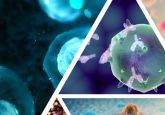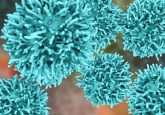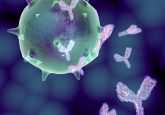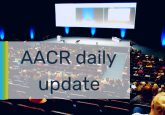Making the most of the AACR Annual Meeting: a first-year perspective
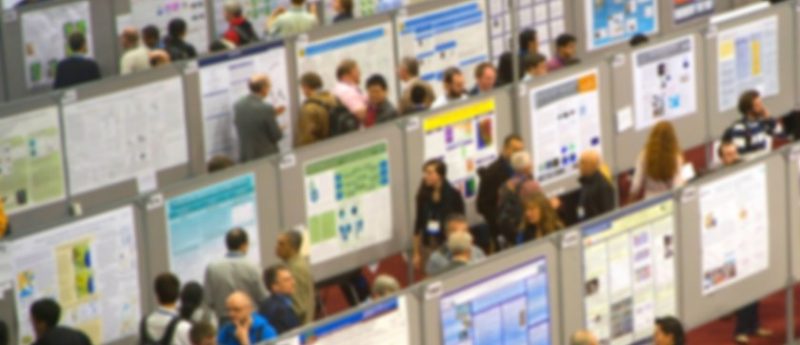
Over 20,000 researchers gathered in Atlanta, Georgia (29 March–3 April, GA, USA) this year for the American Association for Cancer Research (AACR) Annual Meeting, with 6 days packed full of sessions covering a variety of disciplines and groundbreaking research. As a first-time attendee (and first year PhD student), I’ve narrowed down the top ways you can make the most out of your AACR experience!
Use the resources available: the app is your friend!
The AACR app is a relatively new resource available to you to use instead of the traditional booklet agendas, with the capability to build your schedule and receive updates as they happen during the conference. Search the maps, build your schedule, and navigate the hundreds of sessions and posters with ease! Pro tip: use the app BEFORE you attend the conference, so you know how it works and don’t waste precious time between sessions only to figure out your next session is in a completely different building.
Attend the plenary sessions
The plenary sessions provide you with a good overview of what research the conference is centered around, as well as the exciting new data being presented on a variety of topics. There is a plenary session held each morning, so go start your day with an overview before you head off to see the more specific sessions.
Don’t skip out on networking
It can be easy to write off the networking sessions (especially if they are at night, when you want to rest and recharge or go out on the town), but don’t skip these so easily! The Associate Member Council has put together sessions specifically for Associate members to meet each other and senior researchers. These give you the opportunity to gather real world advice and experience from people who have been in your shoes. So, go grab a drink and network with your fellow (and perhaps future) colleagues!
Make use of social media
Don’t underestimate the power of the hashtag! Using social media platforms such as Twitter or Instagram is a great way to find other researchers or start conversations. Follow the conference hashtag to connect with what is happening real time or tweet about your work. You never know who may see it and connect with you in person! The conference hashtags are also a great way to archive any work you see, since social media truly does live forever.
Narrow down your session search
With all of the research presented at AACR, it can be overwhelming to figure out what sessions you want to go to or what is relevant to your research. Make your search easier by looking for keywords (in your handy app) of what is relevant to you. Remember not to just look at sessions, but also poster presentations. Posters give you to opportunity to have longer conversations with researchers and ask more questions than a session normally would provide.
My favorite sessions from AACR were based around non-pharmacological approaches and metabolism. Below I have selected some riveting talks and exciting research surrounding the effects of diet, exercise, and metabolism on cancer.
Nonpharmacologic approaches to improving survival and patient-reported outcomes
This session, which included presentions from Jennifer Ligibel (Dana-Farber Cancer Institute, MA, USA) Dorothy Sears (Arizona State University College of Health Solutions; Adjunct, UC San Diego, CA, USA) and Lee Jones Memorial Sloan Kettering Cancer Center, NY, USA), who discussed dietary approaches such as weight loss and intermittent fasting, as well as exercise and its ability to improve response to cancer therapies. The connection between risk of breast cancer and obesity by observational studies, and body weight is linked to recurrence and mortality in survivors. Ligibel began by explaining the Women’s Health Initiative (WHI), the Women’s Interventional Nutrition Study (WINS), and the Women’s Healthy Eating and Living Study (WHELS), all past long-term observational studies connecting reduction of dietary fat intake to decreased breast cancer risk. She also shared exciting data about a similar long-term study she is involved in – the Breast Cancer Weight Loss Trial (BWEL) – which has seen reductions in invasive disease-free survival with weight loss interventions in breast cancer patients. The trial is expected to continue past its initial 2 year mark to become a longer term study.
Sears, interestingly, argued that we must move past the low-fat diet and instead look at insulin resistance and intermittent fasting. She argued that when one decreases fat consumption, they usually increase their carbohydrate ratio, leading to influences on their insulin response. The is one such example: though it looked at cardiovascular disease (CVD) as well as cancer risk, participants saw reductions in CVD and breast cancer incidence with consumption of extra virgin olive oil, nuts and legumes. As for intermittent fasting, Sears pointed out that wake-time fasting could be hard to stick to and problematic as a diet due to the natural circadian rhythm and, well, “hanger.” Instead, time-restricted feeding may be a better option, as it corresponds to circadian rhythm: eating outside of the rhythm (such as shift workers) has been associated with increased risk of chronic disease and cancer.
Jones rounded off the session with a discussion on exercise and treatment efficacy. He discussed the CANTO study, and how exercise did not improve treatment tolerability in breast cancer patients compared to a non-exercising group. He did, however, discuss the more molecular effects of exercise on cancer, particularly tumor vascularization. Exercise increased vascularization and profusion in tumors, as well as made blood vessels more functional and decreased hypoxia in groups that exercised. The combination of chemotherapy and exercise was a more effective treatment, with lower tumor growth compared to groups without exercise or without chemotherapy.
Diet, physical activity, metabolic health, and cancer prevention
One of the many prestigious award sessions held this year, the AACR-American Cancer Society Award for Research Excellence in Cancer Epidemiology and Prevention, was awarded to Edward Giovannucci who provided a great overview of what is known about the influences of diet and physical activity on cancer.
A vast majority of cancers that are related to obesity are of the reproductive or digestive systems, which is thought to be related to the high proliferation rates of these tissues that may be more sensitive to changes in energy balance and hormones. The “Western” diet, physical inactivity, and obesity make up the “cancer triad,” promoting increases in estrogen, insulin, and systemic/local inflammation. Insulin in particular shows associations with some cancers, as well as increases in inflammation markers such as c-peptide and c-reactive protein found with insulin as well as BMI and physical activity.
Possibly the most interesting fact is that physical activity can have an impact on cancer risk regardless of weight loss.
Physical activity related cancers and those associated with obesity overlap. Physical activity is protective against cancer. Even when adjusting for BMI, the association doesn’t change much. Physical activity may provide this effect through influence on major metabolic hormones, such as insulin, as well as inflammation reduction. Possibly the most interesting fact is that physical activity can have an impact on cancer risk regardless of weight loss: reductions in visceral fat in particular, which occur in response to exercise reduce inflammation and insulin resistance have major effects on cancer risk.
Giovannucci rounded out his talk by discussing major dietary pattern goals, the most important to cancer risk being weight control and maintaining low inflammation/insulin levels. Reduction of pro-insulinemic and pro-inflammatory foods such as red and processed meats, starchy vegetables, refined grains, and sugar-sweetened beverages could reduce insulin spikes and inflammation that lead to insulin resistance and increased colon and digestive cancer risks. He also argued that reducing insulin spikes and falls by eating less pro-insulinemic foods could increase satiety and reduce inhibition of fat burning caused by insulin release. By emphasizing dietary pattern and physical activity changes over primarily focusing on weight loss, we may see reductions in obesity/weight gain and insulin resistance, and therefore reductions in cancer risk.

Profile:
Stephanie Edwards Compton, MS is a first year Ph.D. student at Virginia Tech (VA, US) in the department of Human Nutrition, Foods, and Exercise studying ovarian cancer metabolism and mitochondrial function. She is passionate about cancer, nutrition, and science communication, and runs a science communication Instagram account (@steph.sci.access) and Twitter (@stephsci_access)


